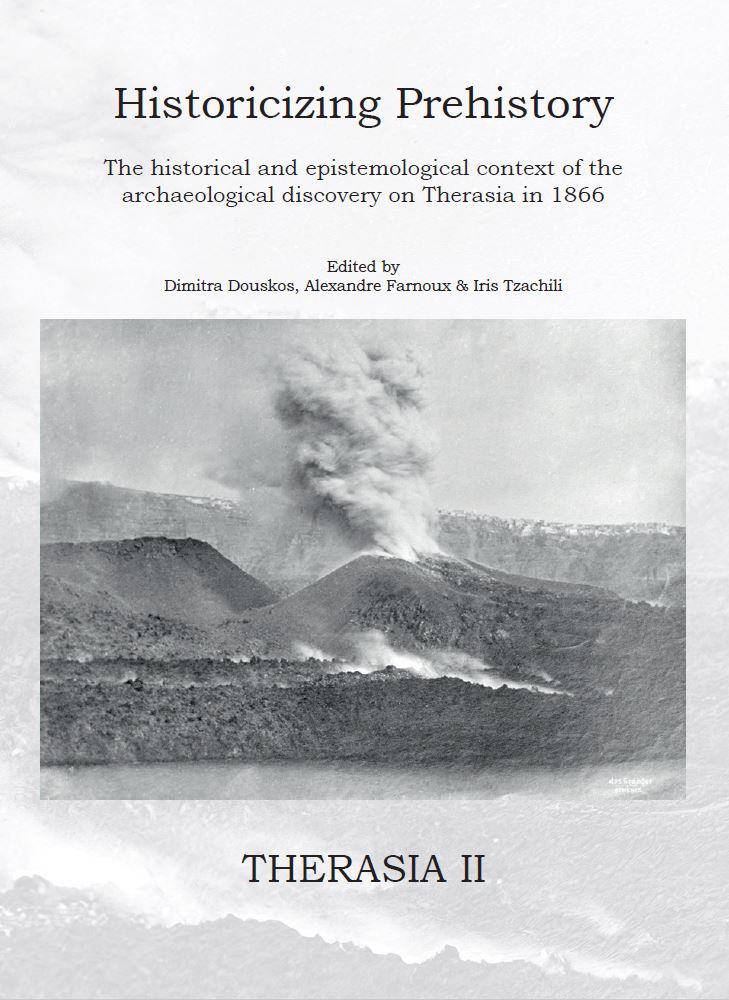 |
| |
| |
[July 2024]
Therasia IV, Settlement patterns and architecture in modern times.
The fourth volume in the series ‘herasia, covers aspects of traditional life and its imprints on the human-made environment including a
variety of topics ranging from rural architecture (terraces, dry-stone walls, water management) and settlements to the typology,
construction technology, and pathology of underground structures.
|
| |
|
| |
[July 2023]
Aellopos, Studies in Honour of Iris Tzachili.
A collection of 35 studies dedicated to Iris Tzachili, Professor Emerita of Prehistoric Archaeology of the University of Crete.
The authors are mainly her students together with many of her colleagues, archaeologists and historians, from Crete, Thera and the Department
of History and Archaeology of the University of Crete. The thematically and chronologically multifaceted studies deal with archaeological
and historical issues, as well as highlighting the historicity of heritage and contemporary reception.
|
| |
|
| |
[May 2022]
¬ayindir 1922, A Tale of Loss from Asia Minor.
The texts in this book concern the small town of Bayindir in the valley of the Kaystros, near Smyrna, and its inhabitants.
They attempt to strike a balance between historical essay, timeless reminiscences, embellished scholarly narratives and personal feelings.
|
| |
|
| |
[2021]
Therasia III. Archaeological research and landscape history of an island community.
Therasia is a suitable field for the observation of small island communities, having preserved significant traces of a cultural landscape
connected with the diachronic ekistic history of the island, the uses of land, and the perception and experience of the space by human
communities on the past.
|
| |
|
| |
[Noe 2020]
Good Works: Studies in Honour of Professor Clairy Palyvou.
Announcing the publication of the volume Good Works, Studies in Honour of Clairy Palyvou, edited by Iris Tzachili and Maria Arakadaki, by Ta Pragmata Publications.
The papers largely lie in Professor Palyvou's own areas of interest, covering technical and theoretical architectural issues,
mainly of the Bronze Age but also in the modern period.
|
| |
|
|
 |
| |
| |
Members:
Tzachili Iris
Daskalakis Nikos
|
| |
Collaborators:
Douskos Dimitra
Pavlaki Katerina |
| |
|
| |
|
|
|
| |
|

List of contents - Introduction (PDF) >>
Order this book >>
|
Therasia II, Historicizing Prehistory
The historical and epistemological context of the archaeological discovery on Therasia in 1866.
Edited by:
Dimitra Douskos, Alexandre Farnoux and Iris Tzachili
In January 1866, an important event shook the lives of the inhabitants of Santorini as well as of the
entire South Aegean and Crete all while attracting considerable scientific and political interest.
In the large enclosed gulf between Thera and Therasia, a series of eruptions, the emergence of new islands
and the submersion of others, heralded the volcanic phenomena that were to last until October 1870.
It was in this context that a prehistoric building was unexpectedly discovered on Therasia in the course
of mining works carried out to support the opening of the Suez Canal. The dwelling was the first of its kind
in Greece, well ahead of Troy, Knossos and Mycenae. Thanks to significant developments in the new sciences
(geology, biology, paleontology) accompanied by theoretical elaborations and universalist historical
approaches in the nascent fields of archaeology, sociology and anthropology, the eruption became a landmark
in volcanology. But not its concomitant prehistoric find. In archaeology, the second half of the
19th century is also a formative period for a discipline obsessed by Classical Greece and Rome and the early
pre-historians methodologically often follow the geosciences, mainly with Palaeolithic research in France
and Spain. This volume explores the manifold and unexpected aspects of the interaction between political,
natural and scientific developments brought about by the new data from the Gulf of Thera in the slow
recognition of what "Greece" was "before legend and before history"...
|
|
| |
|
| |
|
| |
|
|